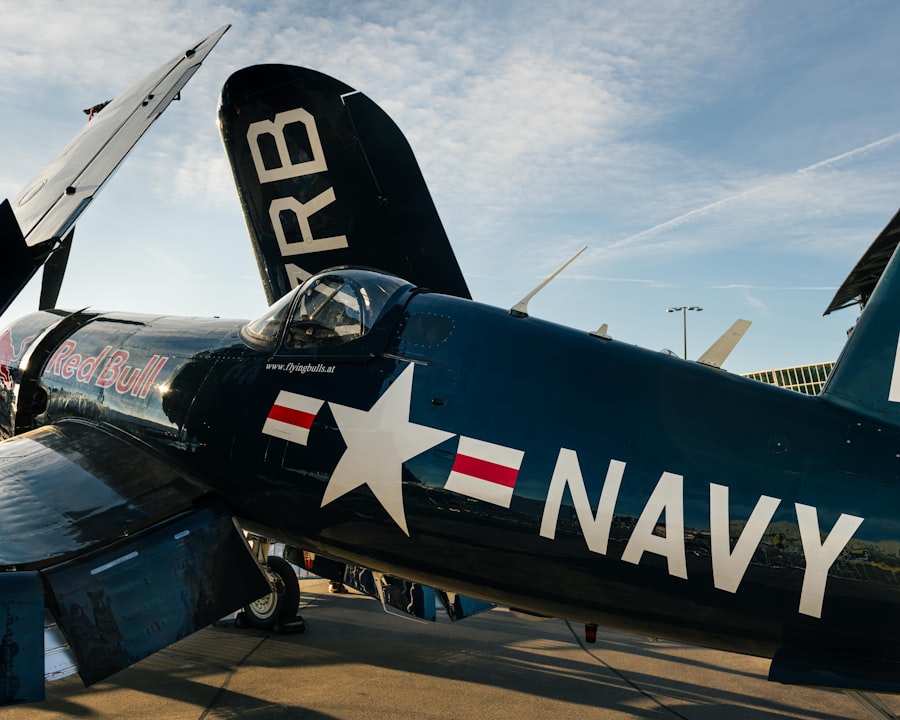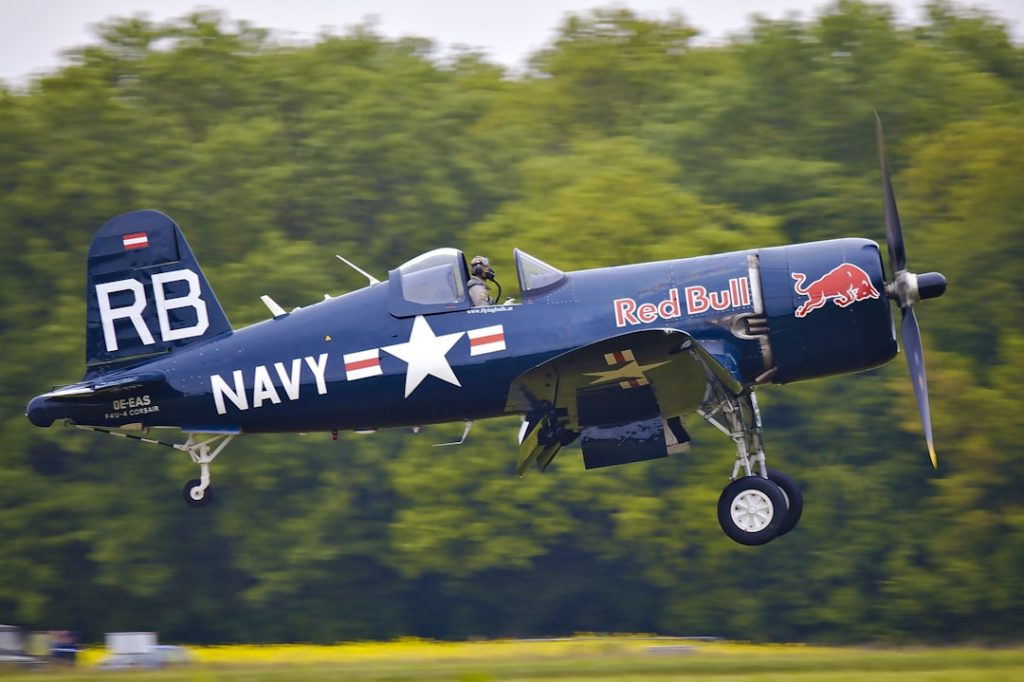Vought Aircraft Industries, Inc. traces its origins back to the early 20th century, a period marked by rapid advancements in aviation technology and a burgeoning interest in flight. The company was founded in 1917 by the visionary aviation pioneer, Charles H.
Vought, who had previously worked with the Wright brothers and was deeply influenced by their groundbreaking achievements. Initially established as the Vought-Sikorsky Aircraft Company, the firm focused on developing innovative aircraft designs that would set the stage for future advancements in aviation. The early years were characterized by a commitment to engineering excellence and a relentless pursuit of performance, which would become hallmarks of the Vought brand.
In its formative years, Vought made significant strides in aircraft design, producing a series of military and civilian aircraft that showcased its engineering prowess. The company’s first major success came with the Vought VE-7, a biplane fighter that gained recognition for its performance during World War
Key Takeaways
- Vought Aircraft was founded with a strong focus on innovative aircraft design from its early years.
- During World War II, Vought played a crucial role by producing key military aircraft that supported the war effort.
- The company successfully transitioned to jet-powered aircraft, marking its adaptation to the Jet Age.
- Vought contributed significantly to space exploration efforts during the Space Race era.
- Today, Vought continues to influence aerospace technology and maintains a legacy of innovation in both military and commercial aviation.
World War II: Vought’s Contributions to the War Effort
As World War II erupted, Vought Aircraft found itself at the forefront of military aviation, contributing significantly to the Allied war effort. The company’s most notable achievement during this period was the development of the F4U Corsair, a fighter aircraft that would become one of the most iconic planes of the war. Designed by Rex Beisel, the Corsair featured a distinctive gull wing design that not only enhanced its aerodynamics but also allowed for a more powerful engine and larger propeller.
This innovative design made the Corsair one of the fastest and most agile fighters of its time, capable of taking on enemy aircraft with remarkable effectiveness. The F4U Corsair was not just a technological marvel; it also played a crucial role in various theaters of war, particularly in the Pacific. Its ability to operate from aircraft carriers and land bases alike made it a versatile asset for naval operations.
Corsairs were instrumental in providing air support for ground troops and engaging in dogfights with Japanese fighters. By the end of the war, over 12,500 Corsairs had been produced, and they had earned a reputation for their ruggedness and reliability. The success of the Corsair solidified Vought’s position as a key player in military aviation and showcased its ability to respond to the urgent demands of wartime production.
The Jet Age: Vought’s Transition to Jet-Powered Aircraft

The post-war era ushered in the Jet Age, a transformative period that revolutionized aviation with the introduction of jet propulsion technology. Vought Aircraft recognized the need to adapt to this new landscape and began developing jet-powered aircraft that would meet the evolving demands of military and commercial aviation. One of the company’s significant contributions during this time was the F-8 Crusader, which became known as “the last of the gunfighters” due to its design that prioritized dogfighting capabilities.
The F-8 Crusader was notable for its speed and agility, featuring a variable incidence wing that allowed pilots to achieve optimal performance at various speeds. This aircraft was designed for carrier operations and was equipped with advanced avionics for its time, making it a formidable opponent in aerial combat. The Crusader saw extensive service during conflicts such as the Vietnam War, where it proved its worth in both air-to-air combat and ground attack missions.
Vought’s successful transition to jet-powered aircraft not only demonstrated its engineering capabilities but also positioned the company as a leader in an industry rapidly moving towards faster and more efficient flight.
Space Exploration: Vought’s Role in the Space Race
| Year | Project | Vought’s Contribution | Milestone Achieved | Impact on Space Race |
|---|---|---|---|---|
| 1958 | Vought X-15 Program | Design and manufacture of hypersonic aircraft | First manned hypersonic flight reaching Mach 6.7 | Advanced high-speed flight technology for space missions |
| 1961 | Saturn V Rocket Components | Development of structural components for launch vehicles | Successful launch of Apollo missions | Enabled heavy payload delivery to lunar orbit |
| 1965 | Lunar Module Support Systems | Manufacture of life support and environmental control systems | Enhanced astronaut safety during lunar missions | Critical for manned moon landings |
| 1969 | Apollo 11 Mission | Supply of aerospace components and engineering support | First successful manned moon landing | Marked a major victory in the space race |
| 1972 | Space Shuttle Development | Design input on reusable spacecraft components | Foundation for future reusable space vehicles | Shifted focus to sustainable space exploration |
As the Cold War intensified and the Space Race began, Vought Aircraft expanded its focus beyond traditional aviation into aerospace technology. The company became involved in several key projects that contributed to America’s efforts to explore outer space. One of Vought’s most significant contributions was its role in developing components for NASA’s Apollo program, which aimed to land humans on the Moon.
Vought was responsible for manufacturing critical components for the Saturn V rocket, which was instrumental in launching astronauts into lunar orbit. The Saturn V remains one of the most powerful rockets ever built, and Vought’s engineering expertise played a vital role in ensuring its success. Additionally, Vought contributed to various spacecraft systems and technologies that supported missions beyond Earth’s atmosphere.
This involvement not only showcased Vought’s versatility as an aerospace manufacturer but also underscored its commitment to pushing the boundaries of human exploration. Vought’s participation in space exploration extended beyond Apollo; it also engaged in projects related to satellite technology and space station development. The company’s innovations during this era helped lay the groundwork for future advancements in aerospace technology and solidified its reputation as a key player in both military and civilian aerospace sectors.
Military Contracts: Vought’s Impact on Military Aviation
Throughout its history, Vought Aircraft has maintained a strong relationship with military organizations, securing numerous contracts that have significantly impacted military aviation capabilities. The company’s ability to deliver advanced aircraft designs has made it a preferred partner for various branches of the U.S. military. This relationship has been characterized by a commitment to innovation and responsiveness to changing military needs. One notable example is Vought’s involvement in developing the A-7 Corsair II, an attack aircraft designed for precision strikes against ground targets. Introduced in the 1960s, the A-7 featured advanced avionics and a design optimized for carrier operations, making it an essential asset for naval aviation during conflicts such as the Vietnam War. Its ability to carry a wide array of munitions while maintaining high levels of accuracy made it a valuable tool for U.S. forces. In addition to fixed-wing aircraft, Vought has also contributed to rotorcraft development through partnerships with other aerospace manufacturers. The company’s expertise in aerodynamics and materials science has enabled it to play a role in advancing helicopter technology, further enhancing military capabilities across various domains.
Commercial Ventures: Vought’s Influence on Commercial Aviation

While Vought Aircraft is primarily known for its military contributions, it has also made significant strides in commercial aviation. The company recognized early on that advancements in technology could be applied to civilian aircraft design, leading to innovations that improved safety, efficiency, and passenger comfort. One of Vought’s notable commercial ventures was its involvement in developing regional jets and business aircraft.
The company’s expertise in aerodynamics and structural design allowed it to create aircraft that met the growing demand for regional air travel during the late 20th century. By focusing on fuel efficiency and operational cost-effectiveness, Vought played a crucial role in shaping modern regional aviation markets. Its designs contributed to making air travel more accessible to smaller communities while maintaining high safety standards.
Moreover, Vought’s influence extended into partnerships with other manufacturers to produce commercial aircraft components. These collaborations allowed for shared expertise and resources, resulting in innovative designs that pushed the boundaries of what was possible in commercial aviation. As air travel became increasingly popular worldwide, Vought’s contributions helped shape an industry that would connect people across continents.
Legacy of Innovation: Vought’s Enduring Impact on Aerospace Technology
Vought Aircraft’s legacy is one of relentless innovation and engineering excellence that has left an indelible mark on aerospace technology. From its early days as a manufacturer of biplanes to its current role as a leader in advanced aerospace systems, Vought has consistently pushed the boundaries of what is possible in flight. The company’s commitment to research and development has led to numerous breakthroughs that have transformed both military and civilian aviation.
One area where Vought has made significant contributions is in materials science. The company has been at the forefront of developing lightweight yet durable materials that enhance aircraft performance while reducing fuel consumption. This focus on efficiency has become increasingly important as environmental concerns grow within the aviation industry.
By pioneering new materials and manufacturing techniques, Vought has helped set industry standards that prioritize sustainability without compromising safety or performance. Additionally, Vought’s advancements in avionics have revolutionized how pilots interact with their aircraft. The integration of sophisticated navigation systems, flight control technologies, and communication tools has improved situational awareness and operational efficiency for pilots across various platforms.
These innovations have not only enhanced safety but have also paved the way for future developments in autonomous flight systems.
Vought Aircraft Today: The Company’s Continued Legacy in the Modern Era
In today’s rapidly evolving aerospace landscape, Vought Aircraft continues to build upon its rich legacy while adapting to new challenges and opportunities. The company remains committed to innovation, focusing on advanced technologies such as unmanned aerial systems (UAS) and next-generation fighter jets that incorporate cutting-edge stealth capabilities and advanced avionics. Vought’s ongoing partnerships with government agencies and defense contractors ensure that it remains at the forefront of military aviation advancements.
As global security dynamics shift, Vought is poised to play a critical role in developing solutions that address emerging threats while maintaining operational readiness for U.S. forces. Moreover, as commercial aviation faces challenges related to sustainability and efficiency, Vought is actively engaged in research aimed at reducing emissions and improving fuel efficiency across its product lines.
By leveraging its historical expertise while embracing new technologies such as electric propulsion systems and hybrid designs, Vought is positioning itself as a leader not only in traditional aviation but also in shaping the future of sustainable air travel. Through its unwavering commitment to innovation and excellence, Vought Aircraft continues to honor its legacy while paving the way for future advancements in aerospace technology that will shape how we fly for generations to come.




